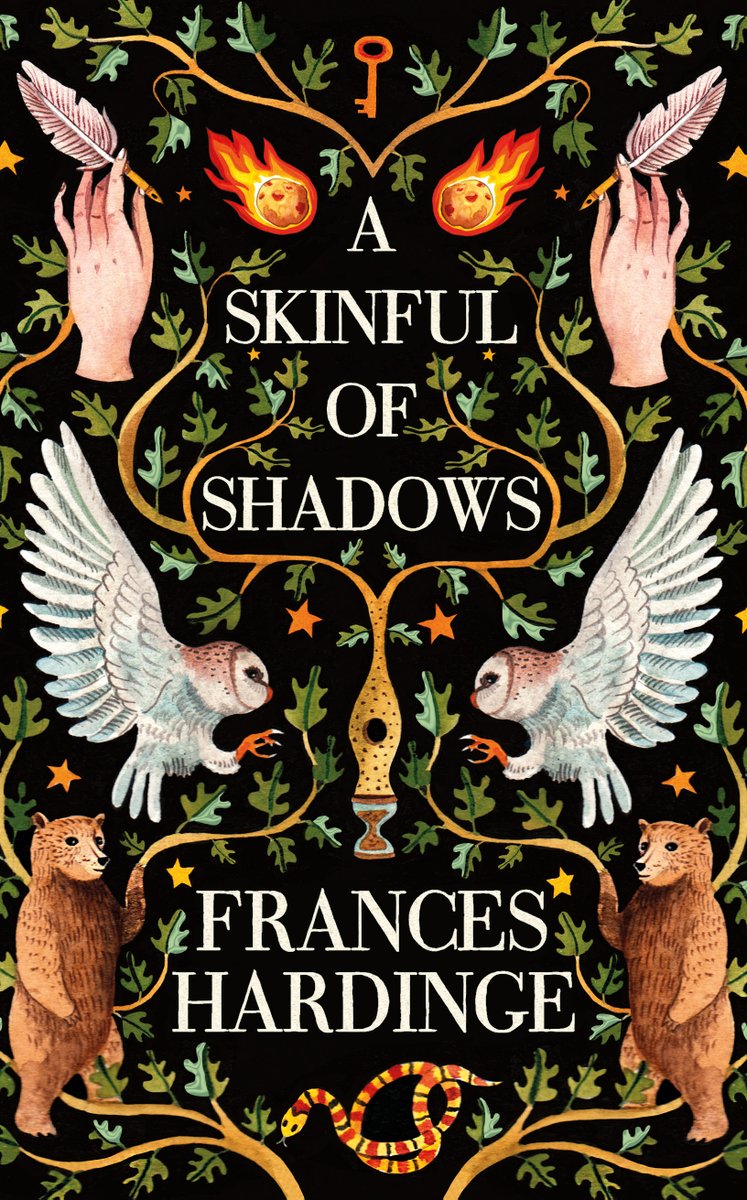Inspiring Young Readers
 posted on 21 Nov 2017
posted on 21 Nov 2017
A Skinful of Shadows by Frances Hardinge
Frances Hardinge is a compelling story- teller who always takes an unusual approach to her subjects. I looked forward to devouring this book because I had very much enjoyed The Lie Tree .
I settled down to read another complex historical mystery with plenty of strong characters and plot twists along the way
Fictional characters often have a lot to cope with as they are growing up which not only gives them an interesting back story but, it is suggested, also prepares them for life in the big bad adult world. Twelve year old Makepeace is certainly a strong contender for having a very difficult childhood. The novel is set during the time of the turbulent English Civil War and she is born into a family with many dark secrets. She spends her first few years living with her mother, who has chosen to run away to London, in order to protect her daughter from something mysterious associated with the stately home where she used to work, Grizehayes. Part of her mother’s often tough love seems to be about shaping her daughter’s resilience in order to prepare her for life and early in the story she abandons her to spend the night alone in an old graveyard:
‘You will be sleeping here tonight. They will try to claw their way into your head. Whatever happens , do not let them in’.
There follows a truly terrifying description of a night packed full of spooky horrors as indicated. We might well wonder what kind of cruel mother would do this to her child, but all becomes clear after her untimely death which happens as a result of the two being caught up in the violence of a riot by apprentices ( there is a great deal of interesting historical context woven into the story). Makepeace soon realises that one of her problems is that she has inherited the unenviable ability to be possessed by ghosts. Indeed, she not only has to cope with being an orphan but to also fight off being possessed by her own mother’s spirit:
‘She lashed out with her mind at the thing’s smoky softness, and felt it scream as she mangled and tore it. The loose pieces of it flailed senselessly like severed worms, and tried to bury their way into her soul. It grappled and clung and raked at her. It could form no words now, only whines and wails’.
It seems that she has developed into a determined and independent young woman who is hopefully now able to fend off unwelcome spirit invaders. Unfortunately, she is not in as much control as she first thinks and so inadvertently swallows the ghost of a huge bear who has died as a result of injuries from a bear baiting. She is immediately torn between feeling sympathy for the bear and learning to live with an angry and frightened animal inside her. The way in which this delicate relationship evolves through the rest of the story is magnificently told. They eventually learn a mutual accommodation and respect for one another and Makepeace gains strength from knowing that she has this powerful ghost slumbering safely within her.
After her encounter with the bear, her maternal aunt and uncle decide that they don’t want such a strange girl living with them any longer and so she is packed off back to Grizehays where she learns that she is the illegitimate daughter of Sir Peter Fellmotte and that this is the bloodline that has given her the special powers. She meets James, her half- brother who shares the family curse and it appears that both of them are valued as potential portals for the spirits of older influential family members when they die. I liked the fairy tale aspect of this relationship whereby a young innocent girl is horribly exploited by her cruel relations for their own gain. She is eventually put to work in the kitchen until she might be needed and through listening to the gossip of the servants, learns more about her past and the curious history of the Fellmotte family. She is soon caught up with the various intrigues of the Royalist and Roundhead sympathies of the household which includes copious plotting and double crossing. This is where I started to get a bit lost.
I also had some problems keeping track of the many subsequent ghosts that invaded her because it appears that she is needed by the family as ‘a temporary bolthole’ and could understand why her head hurt so much. This is orchestrated by the ghastly Lady April and Sir Marmaduke who would much prefer a more seemly vessel for the family spirits:
‘Look at her! How can we think of using this pockmarked little slattern?’
At last Makepeace comes to understand that some of the Felmotte ghosts have been feeding off the bodies and minds of their descendents like Makepeace and James for centuries because ‘Unhoused ghosts melt into nothing.’ By the last section of the book, the author helped me to untangle the different ghost voices by using a variety of fonts to represent each one, but I must confess that I had already become exhausted by all the twists and turns. My final thoughts are that this would have been a much better story if she had kept it just a little bit leaner because there was so much beautifully written atmosphere and many memorable characters. Perhaps this densely layered approach is what some readers like about her writing but my advice from this simple soul is, please don’t embellish future novel plots quite so much.
Karen Argent
November 2017